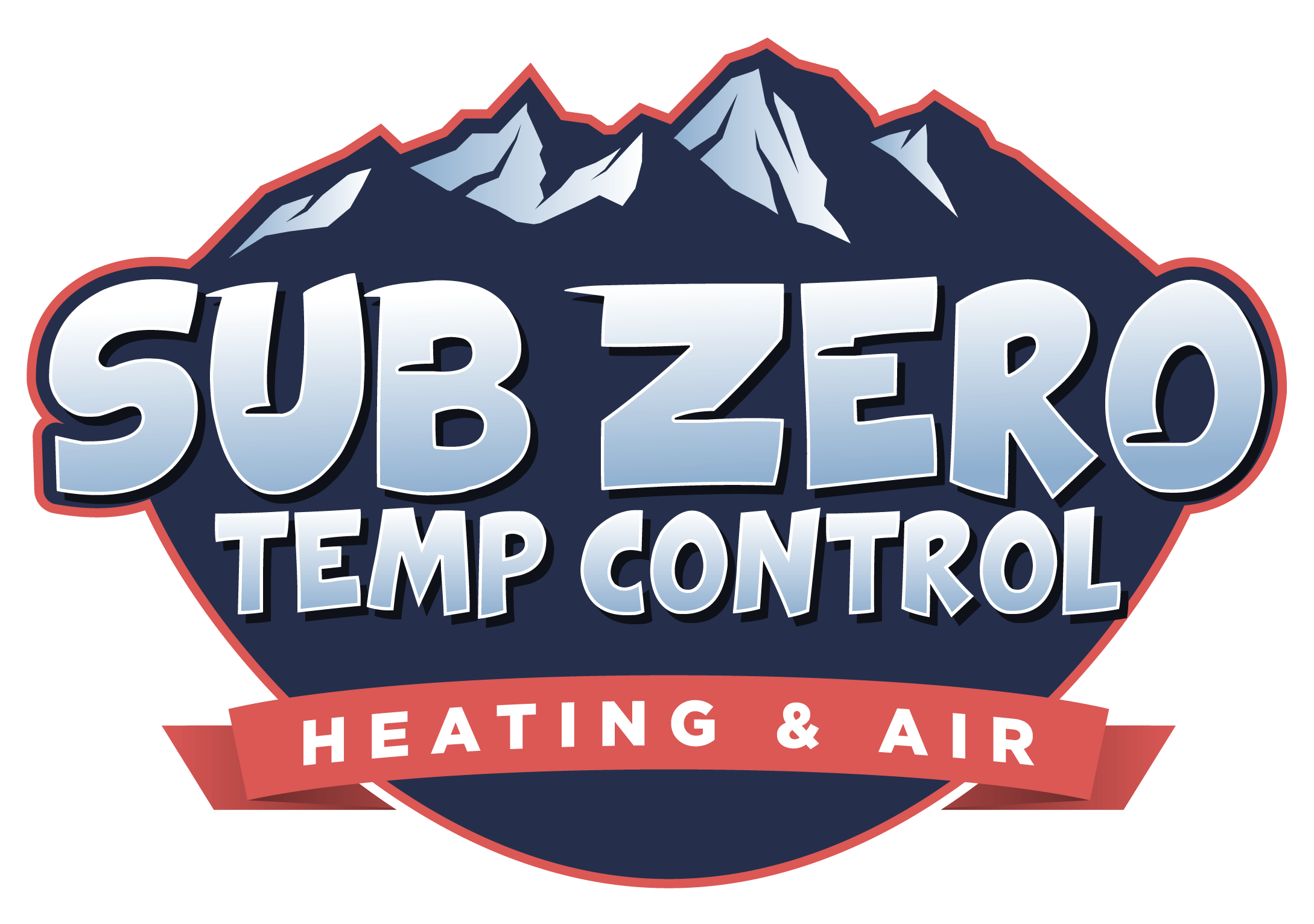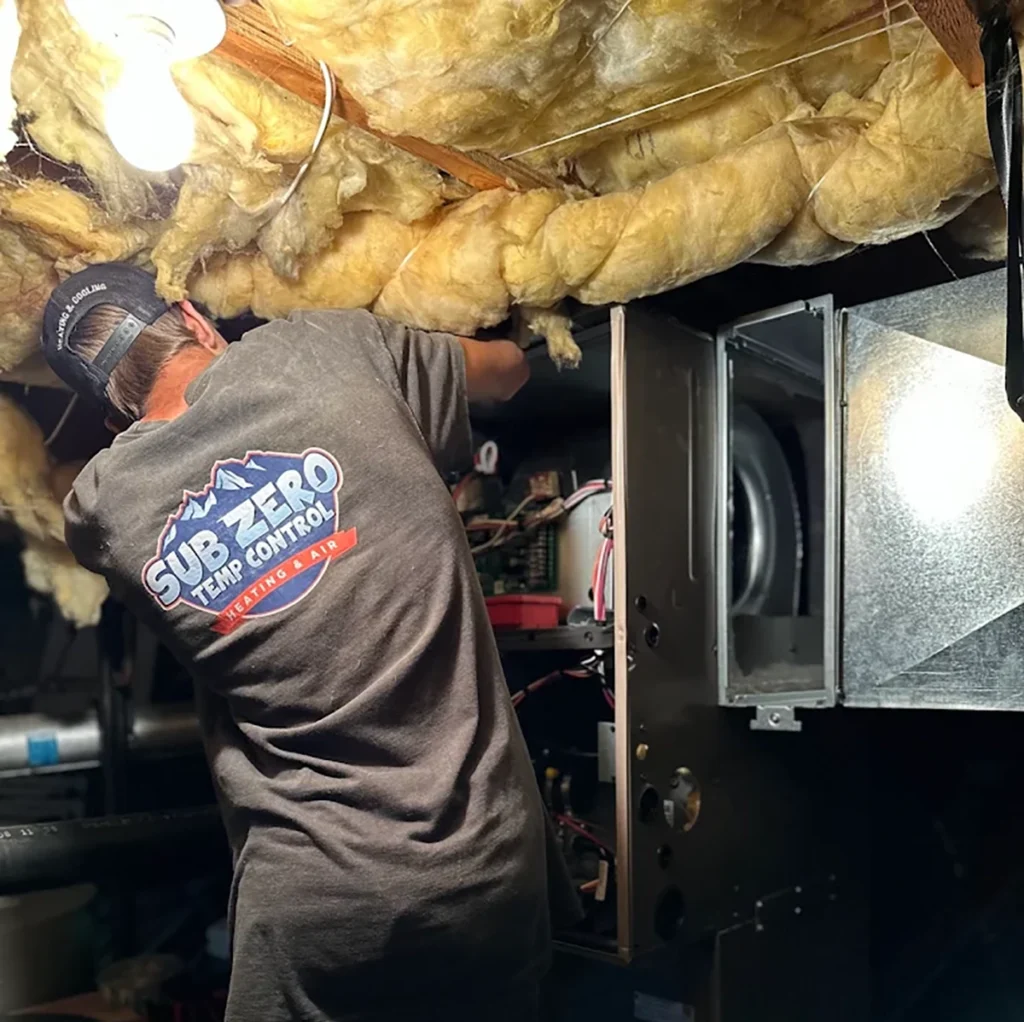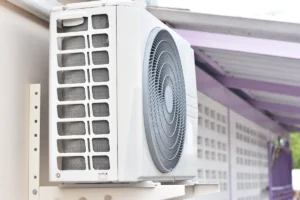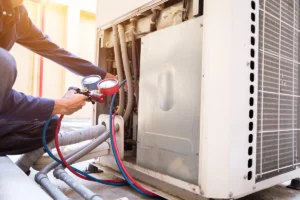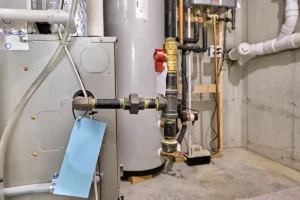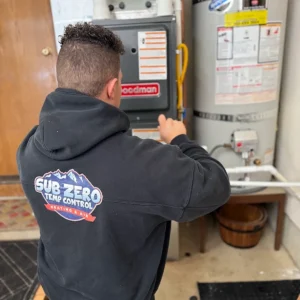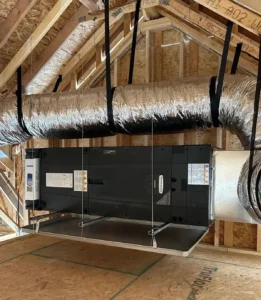If you’ve ever had your heat suddenly cut out on a freezing night, you know how stressful that can be. One of the sneakiest culprits I see out in the field is a faulty furnace pressure switch. It’s a small, round device—usually about the size of a silver dollar—but when it acts up, it can shut your whole heating system down. At Sub Zero Temp Control, we’ve seen this tiny part cause a lot of big headaches (especially during winter cold snaps). Let’s walk through what it does, how to spot when it’s failing, and what you can do to fix it before you’re stuck shivering.
What the Furnace Pressure Switch Actually Does
Think of your furnace pressure switch like a little safety officer. Its main job is to make sure your furnace’s venting system is working properly before letting the burners ignite. When the inducer motor starts, it creates a draft that pulls air through the heat exchanger and vent pipe. The switch senses that airflow and tells the control board, “All clear—safe to fire up.”
If the vent is blocked, the motor is weak, or the draft isn’t right, the switch stays open. That keeps your furnace from lighting, which might sound inconvenient, but trust me—it’s better than the alternative. Without it, dangerous gases like carbon monoxide could build up inside your home. (So yeah, this little guy’s pretty important.)
For a deeper dive into how safety controls protect your furnace, the U.S. Department of Energy’s home heating guide does a great job explaining the basics of combustion safety.
Common Furnace Pressure Switch Problems
When I get a call about a furnace that’s running but not firing, the furnace pressure switch is often high on my list to check. Here are the most common issues:
1. Clogged Vent or Intake Pipe
Leaves, ice, bird nests—you name it, I’ve found it inside vent pipes. Anything that restricts airflow can prevent the switch from closing.
2. Weak Inducer Motor
If the motor can’t pull enough air through the system, the pressure never builds to the level needed to close the switch. Sometimes a little cleaning helps, but often it’s a sign the motor’s wearing out.
3. Cracked or Disconnected Hose
That small rubber tube attached to the furnace pressure switch? If it’s cracked, full of water, or hanging loose, you’ve found your problem.
4. Faulty Switch
Every so often, the switch itself just fails. It can get stuck open or closed, or the internal diaphragm may tear. When that happens, the furnace doesn’t know what to do—and shuts down for safety.
When the furnace pressure switch doesn’t close, the burners won’t light—so you’ll just get cool air from the vents. If your system’s doing that, check out our guide on why your heater is blowing cold air to see what else could be behind it.
How to Troubleshoot a Furnace Pressure Switch
Before diving in, let me say this: safety first. Always turn off power to the furnace before working on it. If you’re not comfortable with tools or testing electrical parts, it’s better to call a professional. People sometimes try risky shortcuts to test the pressure switch—please don’t. It’s not safe.
Here’s what you can check safely:
Inspect the vent pipe. Make sure it’s clear all the way through. In winter, check outside for ice or snow buildup.
Check the hose. If you see moisture or damage, clean or replace it.
Look at the pressure port. Dirt or rust inside the port can block airflow to the switch—gently clean it out.
Listen for the inducer motor. If it’s loud, grinding, or slow to start, that’s a red flag.
If you want a credible, non-technical resource, ENERGY STAR’s maintenance checklist has excellent seasonal maintenance reminders that homeowners can actually follow.
When to Call a Professional
Here’s the truth: diagnosing a furnace pressure switch issue isn’t always straightforward. Sometimes the switch is fine, but another component is causing it to trip. For example, a cracked heat exchanger, a restricted flue, or a malfunctioning control board can all mimic switch problems.
At Sub Zero Temp Control, we use specialized gauges to measure pressure readings and confirm whether the switch is doing its job. That way, you’re not wasting money replacing parts that still work. (I’ve seen plenty of perfectly good switches tossed out because someone guessed wrong.)
If your furnace repeatedly shuts down, gives flashing error codes, or only runs intermittently, it’s time to schedule service.
Sometimes, though, those same symptoms are part of a bigger pattern—like an aging system that’s breaking down more often than it should. When repairs start feeling like déjà vu every winter, it might be time to look into a furnace replacement. A new system runs more efficiently, breaks down less often, and keeps your home warm without the stress of constant repairs.
Preventing Future Furnace Pressure Switch Problems
The best way to avoid another midwinter breakdown? Stay on top of maintenance.
Replace your air filter regularly.
Keep the vent area outside clear year-round.
Schedule annual inspections before the heating season starts.
If you want a deeper look at what full professional tune-ups include, our HVAC maintenance expert guide breaks it all down in simple terms.
These simple steps help your furnace pressure switch and the entire system work efficiently and safely. Plus, they prevent those 2 a.m. “why isn’t the heat working?” moments.
For a quick reminder of how to keep your home safe and cozy during cold weather, you can also check the National Weather Service’s winter home preparedness guide.
When in Doubt, Call the Experts
If your furnace won’t start and you suspect the furnace pressure switch is the reason, don’t stress—we handle this kind of problem all the time once the cold weather hits. We’ll check your airflow, inspect the switch, and make sure your heating system runs safely and efficiently again.
If you’re in Vancouver, WA, or the surrounding area, contact us at Sub Zero Temp Control today—we’ll check your furnace, get it running right, and make sure you stay warm all season.
